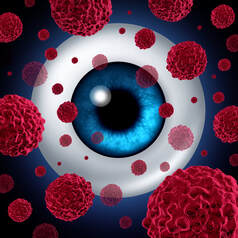What is retinoblastoma?Retinoblastoma is a type of cancer that affects the eye. According to St. Jude Medical Center, although adults and older kids can get retinoblastoma, it usually affects young children. Most children are diagnosed before the age of three. About 300 children in the United States are diagnosed with the disease each year. In most cases, cancer starts in the retina. The tumor can spread to other parts of the eye and may even metastasize outside the eye to other areas, such as the spine, liver, or brain. Retinoblastoma can affect one or both eyes. There are two forms of the disease. One type is inherited, and it tends to affect both eyes. Non-inherited retinoblastoma also occurs. According to the National Cancer Institute, non-inherited retinoblastoma is more common than the inherited form. SymptomsSymptoms of retinoblastoma may appear suddenly and can include the following:
The symptoms above can also be caused by other conditions. But if your child has the signs above, it’s best to have them examined to determine the cause. DiagnosisThe sooner a diagnosis is made, the better. If not treated, retinoblastoma can spread throughout the eye, including to the optic nerve. It can also travel into the bone marrow and throughout the body, which makes it much harder to treat. A diagnosis is made after a physical exam and imaging tests. A CT scan or MRI may be performed to confirm a diagnosis and determine if cancer has spread. In some cases, additional testing may be done to find out if cancer had traveled to the bone marrow. TreatmentTreatment for retinoblastoma may vary depending on whether the cancer is in one or both eyes. The age of the child and the extent of spread outside the eyes also determines the best treatment approach. Possible treatment includes: Surgery: Surgery to remove the eye is most likely if only one eye is affected. The eyes are spared whenever possible. But in some cases, surgery may be the best option to improve prognosis. Chemotherapy: Chemotherapy may involve different combinations of medication. It can be administered intravenously or injected around the eye. Laser therapy: A laser is used to destroy the tumor in the eye. In other cases, a freezing treatment is used to kill the cancer cells. If the tumors in the eyes are small enough, laser therapy may be all that is needed, or it may be used in conjunction with chemotherapy. Radiation therapy: Radiation involves high dose x-ray beams directed at the tumor to destroy the cancer cells. Usually, it is only administered to children with retinoblastoma that did not respond to other treatment. Children that have retinoblastoma that has spread may require high dose chemotherapy and a bone marrow transplant. Additional treatments, such as targeted therapies and clinical trials, may also be an option. Like all types of cancer treatment, therapies for retinoblastoma can have side effects. Plus, side effects in growing children can have lasting effects on development. Pediatric oncologists carefully weigh treatment to determine what will provide the best prognosis with the least number of permanent effects. PreventionUnfortunately, there is no known way to prevent retinoblastoma. Unlike other types of cancer, there are no lifestyle changes or modifications that reduce a child’s risk of developing this type of cancer. But it’s helpful to know if you have a family history of retinoblastoma, which may make you more diligent in watching for symptoms.
If you have any questions, please call our office. Our staff is happy to help. To schedule an exam with one of our eye doctors, please phone us at 508-746-8600. Comments are closed.
|
EYE HEALTH BLOGCategories
All
Archives
July 2024
|
|
Kadrmas Eye Care New England
55 Commerce Way, Plymouth, MA 02360
14 Tobey Road, Wareham, MA 02571 133 Falmouth Road (Rt 28), Mashpee, MA 02649 |
Phone Number:
1-508-746-8600 Hours: Monday through Friday — 8 AM – 4:30 PM |


 RSS Feed
RSS Feed
